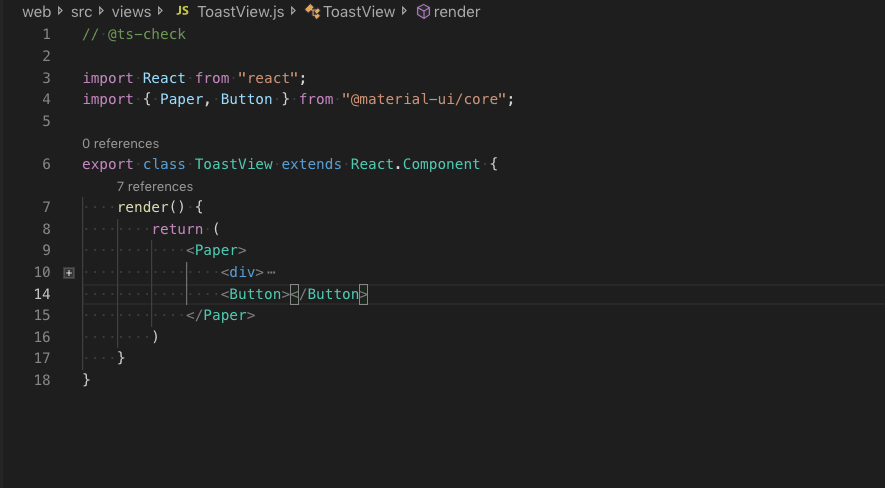The Evolving Landscape of React Component Testing
In the fast-paced world of web development, the tools and philosophies we use are in a constant state of flux. For years, Airbnb’s Enzyme was the undisputed champion for testing React components. It provided developers with a powerful and intuitive jQuery-like API to traverse the component tree, simulate events, and assert on state and props. However, the latest Enzyme News isn’t about a new feature release; it’s about a fundamental shift in the ecosystem. The rise of React Hooks and a new testing philosophy, championed by libraries like React Testing Library, have changed the game entirely.
This shift represents more than just a change in tooling; it’s a change in mindset. While Enzyme encouraged testing implementation details—how a component achieves its result—the modern approach focuses on testing behavior—what the user actually experiences. This article dives deep into the legacy of Enzyme, explores the reasons behind this paradigm shift, and provides a practical guide to navigating the modern React testing landscape. We’ll cover everything from core concepts and migration strategies to the latest best practices, ensuring you’re equipped with the knowledge to write confident, resilient, and maintainable tests for your applications, whether you’re working with the latest features from Next.js News or maintaining a legacy codebase.
Understanding Enzyme’s Core Philosophy and API
To understand why the community has moved on, we first need to appreciate what made Enzyme so popular. Its primary goal was to provide a testing utility that made it easy to inspect the output of React components, abstracting away the complexities of the React Test Utils. It achieved this through a powerful API focused on the internal workings of a component.
The Three Rendering Methods
Enzyme’s power was centered around its three distinct rendering methods, each serving a different testing purpose:
shallow(): This was often the go-to method for pure unit testing. It renders only the component being tested, not its children. This isolation was perfect for verifying that a component rendered correctly based on its props, without worrying about the behavior of its child components.mount(): For integration-style tests,mount()provided a full DOM rendering environment using JSDOM. It rendered the component and its entire child tree, making it possible to test component lifecycle methods (likecomponentDidMount) and complex interactions between parent and child components.render(): This method rendered a component to static HTML and analyzed the resulting structure. It was less about interaction and more about asserting the final HTML output, leveraging the Cheerio library for parsing.
Testing Implementation Details: A Classic Example
Enzyme’s API allowed developers to directly access a component’s state and props. This made it straightforward to write tests that verified internal logic. For example, you could check if clicking a button correctly updated the component’s internal state.
Consider a simple `UserProfile` component that displays a user’s name and status:
// UserProfile.js
import React from 'react';
const UserProfile = ({ user }) => {
if (!user) {
return <div>Loading...</div>;
}
return (
<div className="user-profile">
<h3>{user.name}</h3>
<p className="status">Status: {user.status}</p>
</div>
);
};
export default UserProfile;A classic Enzyme test would use `shallow` rendering and the `find()` and `props()` APIs to check its output:
// UserProfile.test.js
import React from 'react';
import { shallow } from 'enzyme';
import UserProfile from './UserProfile';
describe('<UserProfile />', () => {
it('renders loading state when no user is provided', () => {
const wrapper = shallow(<UserProfile />);
expect(wrapper.text()).toContain('Loading...');
});
it('renders user information correctly', () => {
const mockUser = { name: 'Jane Doe', status: 'Online' };
const wrapper = shallow(<UserProfile user={mockUser} />);
// Assert on the rendered elements and their content
expect(wrapper.find('h3').text()).toBe('Jane Doe');
expect(wrapper.find('.status').text()).toBe('Status: Online');
});
});This approach is clear and effective for verifying the component’s structure. However, it tightly couples the test to the implementation (e.g., the class name `.status`). A simple refactor of the component’s internal structure, even if the user-facing output remains the same, could break this test.

The Tectonic Shift: React Hooks and a New Testing Paradigm
The biggest Enzyme News of the past few years has been its struggle to keep pace with modern React. Two major factors contributed to its decline in popularity: the introduction of React Hooks and a philosophical shift towards behavior-driven testing.
The Challenge of React Hooks
When React 16.8 introduced Hooks, it fundamentally changed how developers write components. Class components with lifecycle methods and state objects gave way to functional components with `useState` and `useEffect`. Enzyme’s API, which was heavily reliant on class component instances (e.g., `wrapper.state()` and `wrapper.instance()`), could not easily interact with the inner workings of Hooks. While some workarounds existed, they were often clumsy and went against the grain of modern React patterns. This technical hurdle was a significant blow.
Furthermore, Enzyme required an “adapter” for each version of React. The lack of an official, stable adapter for React 18 was the final signal for many teams that the library’s maintenance had stalled and it was time to look for alternatives. This is a critical piece of news for anyone considering testing tools in the modern React Native News and web development landscape.
The Rise of React Testing Library (RTL)
Concurrent with Enzyme’s struggles, Kent C. Dodds’ React Testing Library (RTL) was gaining massive traction. RTL introduced a different philosophy, summarized by its guiding principle: “The more your tests resemble the way your software is used, the more confidence they can give you.”
Instead of providing utilities to access internal state and props, RTL encourages you to interact with your components as a user would:
- Querying the DOM: Find elements by their text content, label, accessibility role, or other user-facing attributes.
- Simulating Events: Fire user events like clicks, keyboard input, and form submissions.
- Asserting on the Result: Check what the user sees in the DOM after the interaction.
This user-centric approach leads to tests that are more resilient to refactoring. As long as the component’s behavior remains the same from a user’s perspective, the tests will pass, even if you completely rewrite the internal implementation (e.g., switching from Redux News to Zustand News for state management).
Let’s look at a counter component to highlight the difference:
// Counter.js
import React, { useState } from 'react';
export const Counter = () => {
const [count, setCount] = useState(0);
return (
<div>
<p>Count: {count}</p>
<button onClick={() => setCount(count + 1)}>Increment</button>
</div>
);
};
// --- Test with React Testing Library ---
// Counter.test.js
import { render, screen, fireEvent } from '@testing-library/react';
import { Counter } from './Counter';
test('increments the counter when the button is clicked', () => {
render(<Counter />);
// 1. Find the elements a user would interact with
const button = screen.getByRole('button', { name: /increment/i });
const countDisplay = screen.getByText(/Count: 0/i);
// 2. Assert initial state
expect(countDisplay).toBeInTheDocument();
// 3. Simulate a user action
fireEvent.click(button);
// 4. Assert the result that the user sees
expect(screen.getByText(/Count: 1/i)).toBeInTheDocument();
});Notice how this RTL test never touches the `useState` hook. It doesn’t know or care about the internal state variable `count`. It only cares that when a user clicks the “Increment” button, the text on the screen updates from “Count: 0” to “Count: 1”. This is the core of the modern testing philosophy, and a key driver in the latest React Testing Library News.
Migrating from Enzyme to Modern Alternatives
For teams maintaining projects with extensive Enzyme test suites, migrating can seem daunting. However, a gradual, component-by-component approach can make the process manageable. The key is to shift your thinking from “How is this component built?” to “How does a user interact with this component?”

A Practical Migration Example: A Login Form
Let’s consider a simple login form and see how a test would be migrated from Enzyme to RTL. This is a common pattern where you might be using libraries discussed in React Hook Form News or Formik News.
An Enzyme test for this form might look like this:
// Enzyme Login Form Test (Legacy)
import { shallow } from 'enzyme';
import LoginForm from './LoginForm';
it('updates state on input change and calls onSubmit', () => {
const handleSubmit = jest.fn();
const wrapper = shallow(<LoginForm onSubmit={handleSubmit} />);
// Simulate typing into the email field
wrapper.find('input[name="email"]').simulate('change', {
target: { name: 'email', value: 'test@example.com' },
});
// Check the component's internal state (brittle)
expect(wrapper.state('email')).toBe('test@example.com');
// Simulate form submission
wrapper.find('form').simulate('submit', { preventDefault: () => {} });
// Check if the handler was called
expect(handleSubmit).toHaveBeenCalledWith({
email: 'test@example.com',
password: '', // Assuming password was empty
});
});This test is highly coupled to the implementation. It knows about `state`, the `name` prop on the input, and the `simulate` API.
Now, let’s rewrite this test using React Testing Library and the companion `user-event` library, which provides more realistic event simulation.
// RTL Login Form Test (Modern)
import { render, screen } from '@testing-library/react';
import userEvent from '@testing-library/user-event';
import LoginForm from './LoginForm';
it('allows the user to log in', async () => {
const handleSubmit = jest.fn();
render(<LoginForm onSubmit={handleSubmit} />);
const user = userEvent.setup();
// Find elements by their accessible labels (more robust)
const emailInput = screen.getByLabelText(/email address/i);
const passwordInput = screen.getByLabelText(/password/i);
const submitButton = screen.getByRole('button', { name: /log in/i });
// Simulate a user typing
await user.type(emailInput, 'test@example.com');
await user.type(passwordInput, 'password123');
// Assert the value the user sees
expect(emailInput).toHaveValue('test@example.com');
expect(passwordInput).toHaveValue('password123');
// Simulate a user clicking the submit button
await user.click(submitButton);
// Assert the outcome
expect(handleSubmit).toHaveBeenCalledWith({
email: 'test@example.com',
password: 'password123',
});
expect(handleSubmit).toHaveBeenCalledTimes(1);
});The RTL test is more descriptive of the user journey. It finds form fields by their labels (an accessibility win), simulates typing, and clicks the button. It verifies the outcome—that the `onSubmit` function was called with the correct data—without ever inspecting the component’s internal state. This test will continue to pass even if you switch from `useState` to `useReducer` or a global state manager like that featured in recent Recoil News.
Best Practices and the Broader Testing Ecosystem
While RTL has become the standard for component testing, it’s just one piece of a comprehensive testing strategy. A modern application requires a multi-layered approach to ensure quality.
The Modern Testing Stack
- Unit & Integration Testing: Use Jest News or Vitest as your test runner, with React Testing Library for rendering components and asserting on their behavior. This forms the foundation of your testing pyramid.
- End-to-End (E2E) Testing: For testing critical user flows across your entire application, tools like Cypress and Playwright are invaluable. The latest Cypress News and Playwright News highlight their increasing power in simulating real user interactions in a real browser.
- Visual Regression Testing: Tools like Storybook News with Chromatic or Percy help catch unintended UI changes by comparing screenshots of your components over time.
- Mobile Testing: In the mobile sphere, the philosophy is the same. The latest React Native News shows a strong community adoption of React Native Testing Library, while Detox News covers the E2E testing space for mobile applications built with frameworks from Expo News.
Where Does Enzyme Still Fit?
For new projects, there is little reason to choose Enzyme. However, countless legacy applications have thousands of Enzyme tests. A full rewrite is often impractical. In these cases, the best strategy is often to:
- Keep the existing Enzyme test suite running to prevent regressions.
- Write all *new* tests for new features or bug fixes using React Testing Library.
- When significantly refactoring an old component, take the opportunity to migrate its tests from Enzyme to RTL.
This pragmatic approach allows for a gradual and manageable transition to modern best practices.
Conclusion: Embracing the Behavioral Testing Mindset
The story of Enzyme is a classic tale of technological evolution. It was a groundbreaking tool that served the React community exceptionally well for many years. However, as the core library evolved with features like Hooks, and as the community’s understanding of effective testing matured, the landscape shifted. The latest Enzyme News is a reflection of this progress—a move away from testing implementation details and towards testing user-facing behavior.
By embracing modern tools like React Testing Library, you write tests that provide higher confidence, are more resistant to refactoring, and naturally encourage better, more accessible code. For developers starting new projects or looking to modernize their testing strategy, the path is clear. Focus on how users interact with your application, and let that guide your tests. This user-centric philosophy is the key to building robust, maintainable, and high-quality applications in today’s dynamic React ecosystem, whether you’re using Remix News, Gatsby News, or building a custom solution from scratch.












